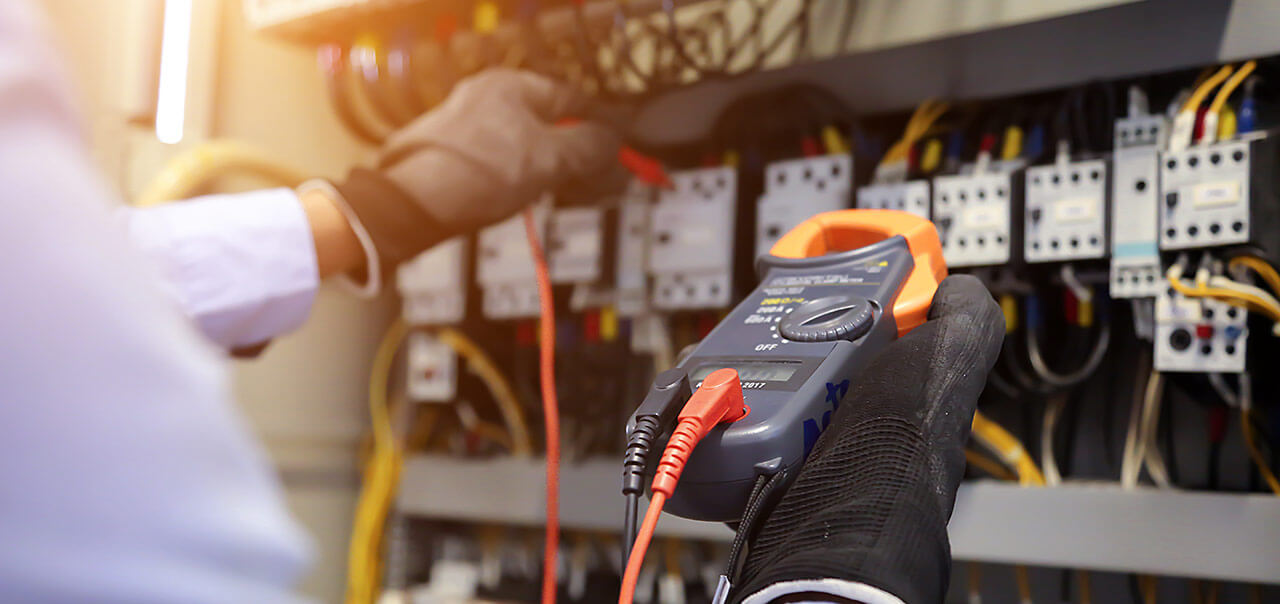Electrical safety in hospitals is a matter of absolute priority to avoid problems with electric current that could harm the operation of the health center and the health of patients. In this article we reflect on these standards, what they are like, what they are for and why it is important to comply with them.
In the last year, due to the coronavirus, the importance of hospital electrical engineering and, of course, electrical safety in hospitals and all kinds of healthcare centers has become more apparent than ever.
In a Russian hospital, for example, a fire caused the death of five people connected to fans and more than 150 were evacuated. Apparently, the source of the fire was an overheated fan. A similar situation occurred in a hospital in Rio de Janeiro that had to evacuate 200 people after a warehouse burned and the fire spread rapidly throughout the building.
Both examples highlight the importance and need of having a series of electrical safety standards in hospitals to protect medical personnel and patients in any circumstance.
“Do not forget that most medical devices are electronic and are powered by power sources and the electrical network. Therefore, if an electrical safety failure occurs, the risk of injury to the patient is high.

What are the electrical safety standards in hospitals?
Electrical safety regulations are a series of standards or procedures focused on the prevention and reduction of risks for both patients and electrical installations, the human team and the environment.
Today, the main organizations that set global standards for hospital electrical safety are the International Organization for Standardization (ISO) and the International Electrotechnical Commission (IEC). Although there are also rules of the World Trade Organization and each country usually has its own regulations.
International standards
IEC 60601 AAMI / NFPA99
This is a standard for medical equipment. Its objective is to establish general requirements to favor protection against dangers related to electrocution, that is, caused by electric shocks. NFPA 99 established the criteria considering the risks of personnel or visitors in the facilities. In this way, it was sought to minimize the dangers of fire, explosion and electricity.
NFPA 110 Standard for emergency and standby power systems
Focuses on performance-level requirements for emergency and servo power systems that offer an alternative source of power if the main source of electrical power fails.
IEEE – Electric systems in healthcare facilities
Standard 602-2007 has several practical recommendations regarding the design and operation of electrical systems for healthcare facilities, that is, hospitals, clinics, healthcare centers, nursing homes, etc.
Standards in Spain
The evolution of hospital facilities and electrical safety and engineering has been an evolution in parallel with technological advances. In this sense, electromedical equipment began to be used in a generalized way from the 70s, which led to the formulation of several regulations.
In 1973 Spain presented the Low Voltage Electrotechnical Regulation, which included in IT-25 specific requirements for electrical installations in operating rooms. This regulation also requires the use of an installation through isolation transformers.
Years later, in 1978 the UNE 20615 standard was presented, which has been updated over the years. Likewise, in 2002 a new Low Voltage Electrotechnical Regulation was published to replace the 1973’s one.
This new document the ITC-BT38 in relation to the particular requirements for electrical installations in operating rooms and intervention rooms. As in the regulation of 73 and in the UNE 20615, this regulation required the use of transformers and isolation detectors.
In 1998 the UNE 20460-7-710: 1998 was published, a standard with rules for installations in premises for medical use. It was drawn up based on the documents of the international standard IEC 60364-7-710: 2002.

Why comply with the rules?
If health comes first in people, in hospitals and health or medical care centers, so is safety.
Hospitals carry out daily activities that depend on electronic medical equipment, which poses a risk both to people and to the infrastructure of the buildings. In this context, complying with regulations helps hospitals to control all possible risks and have the capacity to mitigate them.
Not complying with the electrical safety regulations in hospitals means…
- Exposing the patient to possible risks and electrical events that can cause from burns to complicate their medical situation or cause death in the most serious cases.
- Make medical work more difficult and also temporarily or permanently expose professionals who work in hospitals.
- Put at risk the patient’s treatment, its effectiveness and recovery in case of failure of the energy supply.
- The possibility of fire hazard caused by electrical problems. It is a major adverse event since most of the patients admitted to a hospital do not have their own mobility.
“If health comes first in people, in hospitals and health or medical care centers, so is safety.
There are also many benefits of applying and complying with electrical safety standards in hospitals:
- Electrical hazards can be mitigated for both medical personnel and patients.
- It allows the permanent and uninterrupted guarantee of the power supply, which is essential for the operation of hospitals and the healthcare offered to patients.
- By ensuring the safety of transportation and use of electricity, there is less risk of explosion and fire.
- The protection of medical equipment that is usually electronic and is essential for medical care.

Examples of electrical safety standards in hospitals
The best way to avoid risks related to electrical safety is with a whole series of safety measures. Here are some of them:
- Lighting. It is important to know the level and type of luminaires as well as the space to be illuminated to determine the necessary electrical power.
- Use of differential protections to ensure that all circuits in operating rooms, critical areas and rooms for medical use are protected.
- Operating rooms are areas of special risk, so ground connections are required to guarantee the safety of these critical areas.
- Protective measures against direct contact. It is a very basic means of protection such as, for example, screens or stickers that indicate to people that the danger of a material or medical equipment.
Prevention and commitment to quality hospital engineering are the best tools not only to comply with electrical safety standards in hospitals, but also to guarantee the safety of patients and healthcare professionals and offer effective medical assistance.



